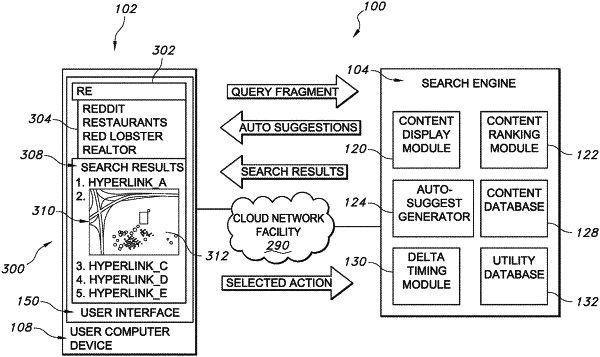| CPC G06F 16/9532 (2019.01) [G06F 3/0484 (2013.01); G06F 16/9535 (2019.01); G06Q 10/04 (2013.01); G06Q 30/0242 (2013.01); G06Q 30/0257 (2013.01); G06Q 30/0282 (2013.01); G06Q 30/0623 (2013.01)] | 29 Claims |

|
1. A search engine system comprising:
a user interface in a computing environment configured to receive at least a first fragment from a user;
a content display module configured to automatically generate a plurality of anticipated search results in the computing environment based on at least the first fragment,
wherein the content display module is configured to automatically display search results that include an arrangement of a plurality of visual content elements, wherein each of the plurality of visual content elements is based on one of the plurality of anticipated search results, the visual content elements including at least a portion of one of an image and a video,
wherein the content display module is configured to automatically generate a set of variants for at least one of the plurality of the visual content elements that represent alternative presentations of content from available images, video, data, and metadata content from at least one of the plurality of anticipated search results, and
wherein the content display module is configured to direct the user to content at one of a network and local destination associated with one of the visual content elements selectable by the user with the user interface; and
a machine learning module trained, based on times to achieve a desired user outcome, to predict and indicate search result presentation data to the content display module,
wherein the times to achieve the desired user outcome correspond to elapsed times between: (i) when search results are transmitted to the user or the user selects a particular search result, and (ii) when the user has completed a transaction associated with achieving the desired user outcome, and
wherein the times to achieve the desired user outcome are inversely proportional to a utility of the search results such that: (i) a shorter time corresponds to a higher utility of the search results, and (ii) a longer time corresponds to a lower utility of the search results.
|